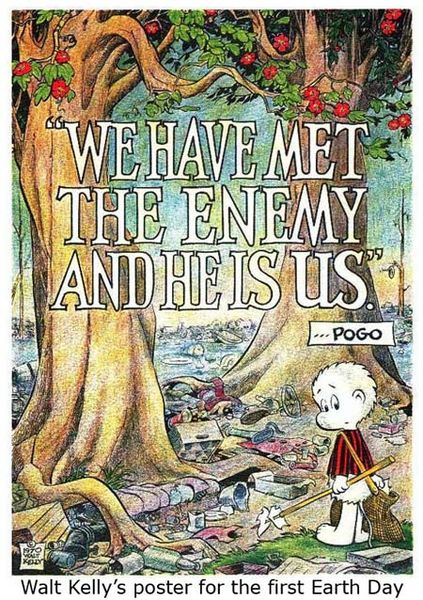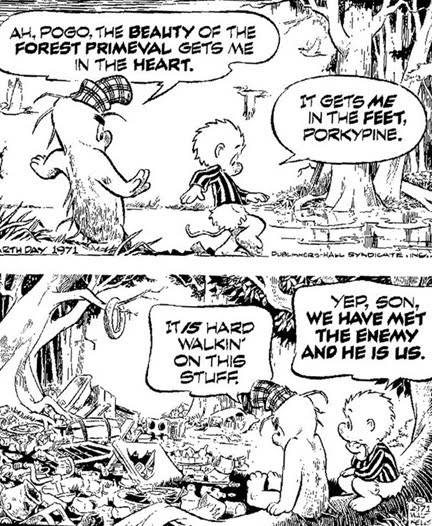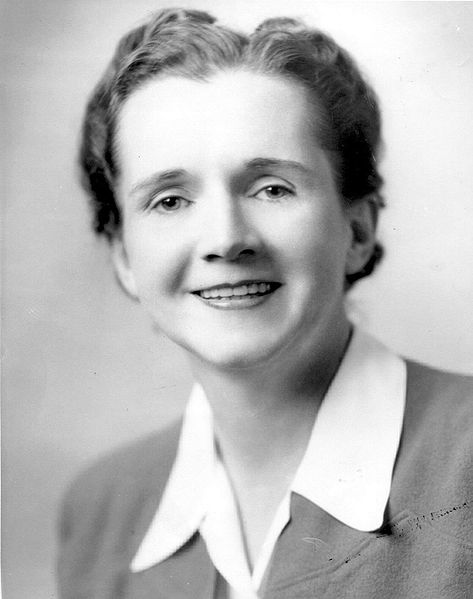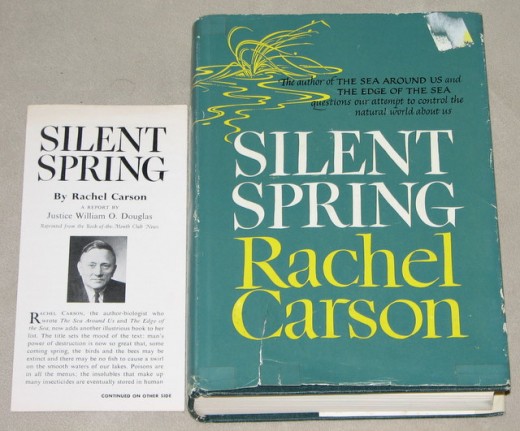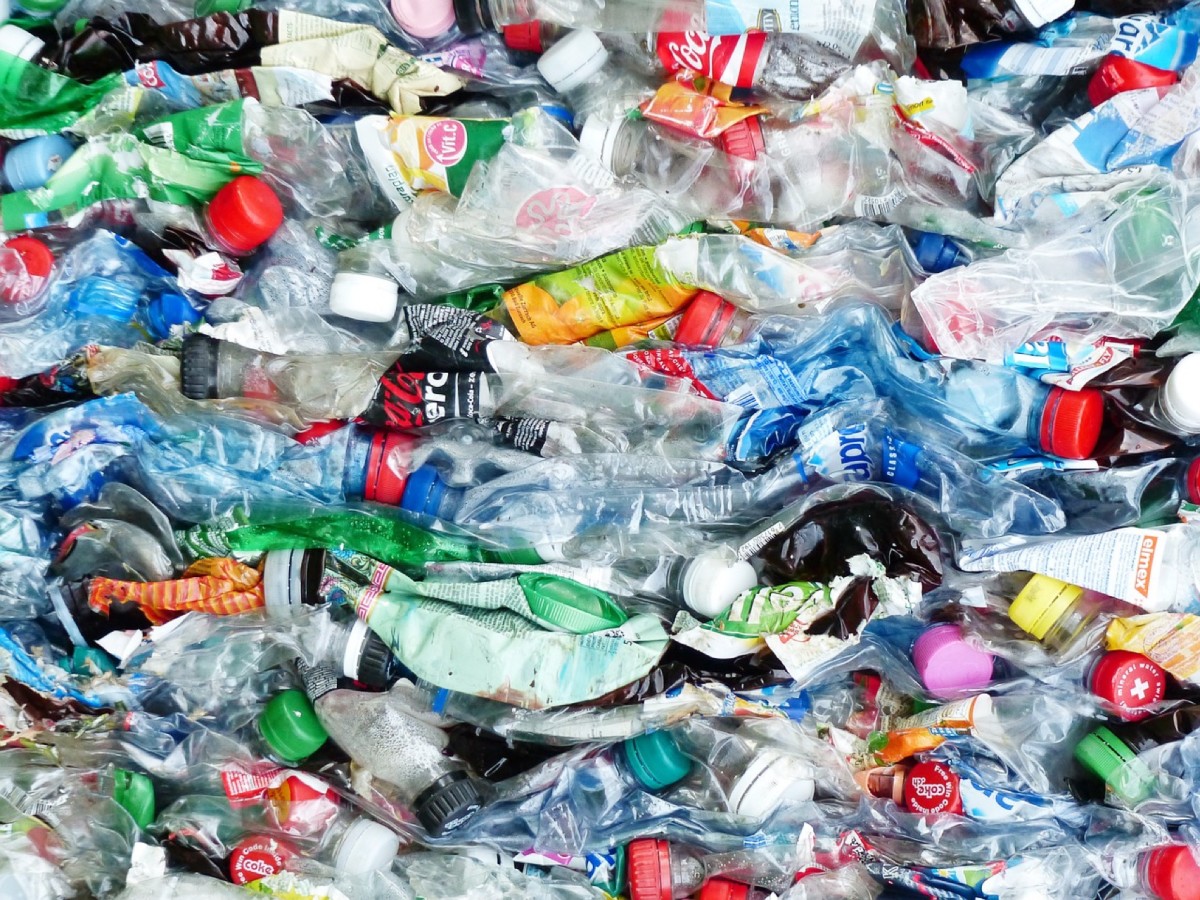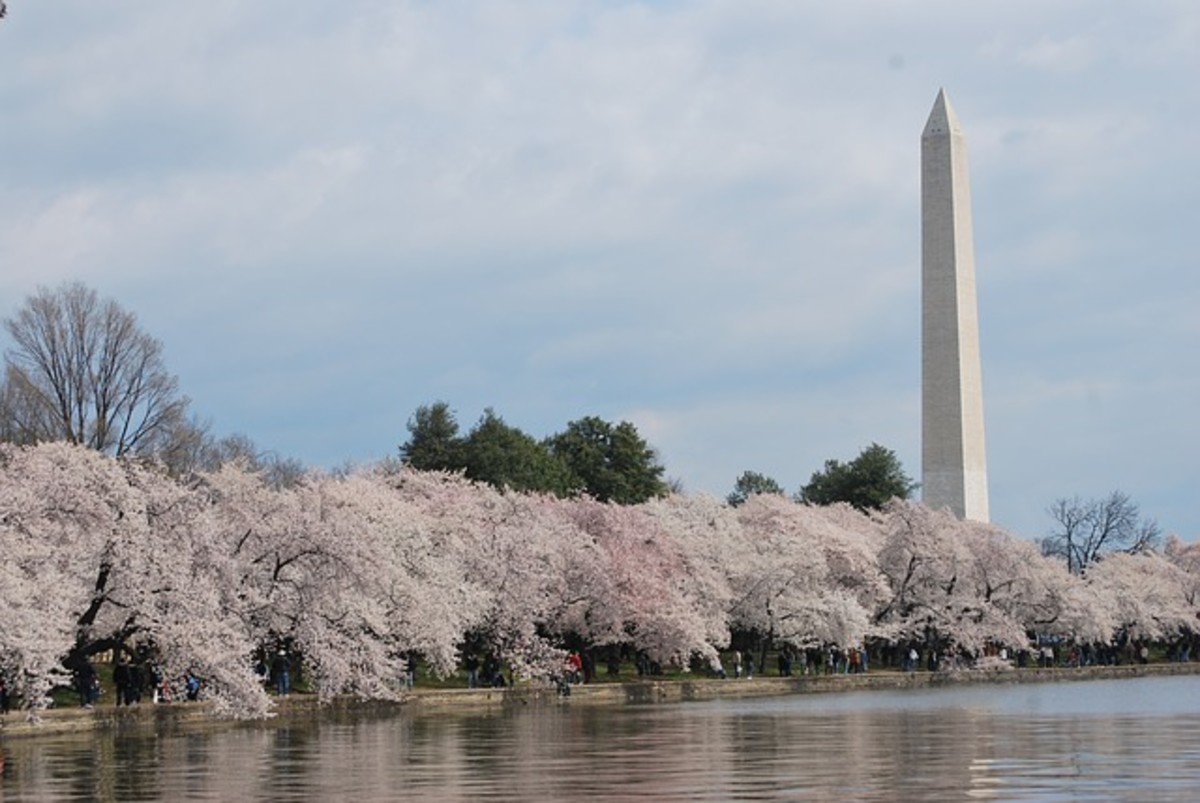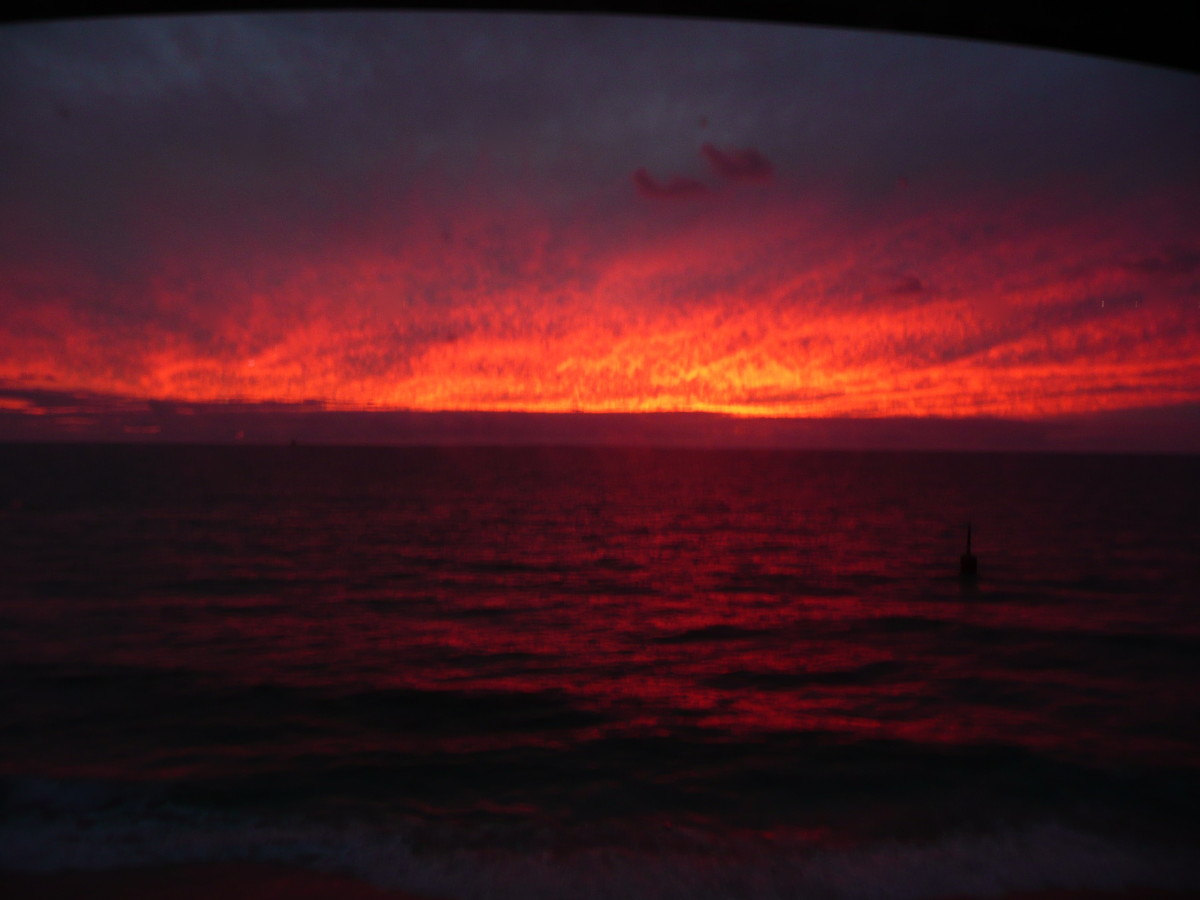Earth Day - April 22, 2011


Earth Day Beginnings
April 21, 2011
Largely due to the efforts of a handful of baby-boomers and a little known Senator Gaylord Nelson, Earth Day officially kicked off on April 22, 1970. But the idea did not spring from the senator's head overnight. A number of other events had to take place before the idea carried enough weight to become popular in the American imagination and, later, on a world-wide scale.
This article is about those people, the direct effect their efforts had, and my personal recollections of the state of the ecology before, during and after the first Earth Day.
Forerunners and Contemporaries
Forerunners
First and foremost are the forerunners. The people who first pointed out that there were problems and did what they could (often a lot) to get the problem firmly in American's eyes. These people included John Muir, Ralph Waldo Emerson, John James Audubon, George Perkins Marsh, and Henry David Thoreau.
Theodore Roosevelt should likely also be considered though some of his ideas and stands were seemingly directly opposed to the movement. His stand on Indians, for example, makes him less than stellar as an environmentalist.
Environmental Advocates
On the basis of their work, a new generation of environmentalists carried on with the ideas of these forerunners. These included Ansel Adams, Aldo Leopold, Jacques-Yves Cousteau, Aziz Ab'Saber, Lester Brown, Rachel Carson, and Chico Mendes.
Baby Boomers
And from there a new generation of people, baby-boomers, brought the problems of environmental exploitation (not a bad word really) to the political stage.
These included Gaylord Nelson, Albert Gore, Jimmy Carter, David Brower, Rusty Schweickart, Steve Irwin, David Suzuki, Paul Watson, Jane Goodall, and Maria Cantwell.
To be sure this last group is quite a mixed bag, but each, in his or her own way, brought environmentalism and conservatism to the forefront of American and then World consciousness.


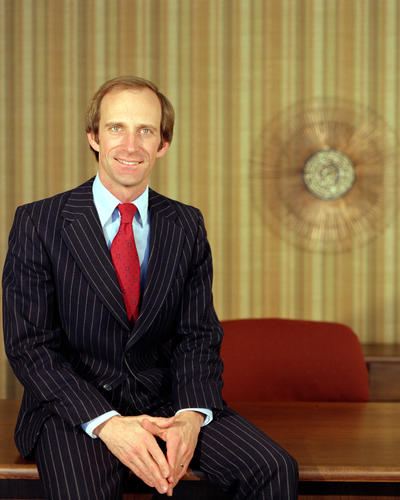
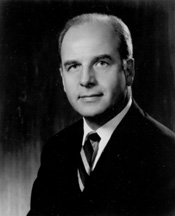
The Players
Rachel Carson, was a marine biologist. Her first job was with the U.S. Bureau of Fisheries. She became a writer with the publication of The Sea Around Us, The Edge of the Sea, and Under the Sea all of which were best-sellers. This three book trilogy introduced the reader to the entire ocean from the shoreline to the deep ocean.
In 1962 she published the book Silent Spring
which explored the detrimental effects of synthetic pest control
chemicals most notably DDT. At the time her research concentrated on
studies by scientists on the effects of synthetic pesticides. There were
two camps, as these things go, with one group of scientists willing to
declare the chemicals harmless and the other willing to acknowledge
their potential danger.The book took four years of research and covered
the effects of DDT, dieldrin and heptachlor
not on birds, insects, and mammals, but directly humans. It didn't hurt
her efforts that during 1957 through 1959 that U.S. cranberry crops
were found to contain high levels of the herbicide aminotriazole. At the time aminotrazole was known to cause cancer in laboratory animals.
Her research took her to the National Cancer Institute and Wilhelm Hueper, who had already classified many commonly used pesticides as carcinogens. Though she was quite ill with cancer from 1960 through the publication date in 1962 Carson and publisher Houghton-Mifflin lined up a cadre of scientists and other researchers to back the book. Shortly after publication Silent Spring made the Book of the Month club. Despite heavy opposition from the chemical industry, the publication lead to a nationwide ban on DDT.
Carson died on April 14, 1964 of heart failure. Contributing factors to her death were her weakened state from cancer and the resulting radiation therapy and anemia.
Denis Hayes was born in 1944. Though born in Wisconsin he grew up and spent most of his youth in Washington State. As a high school student he witnessed the use of DDT to reign in the mosquito problem in Camas, Washington. It disturbed him greatly as the massive clouds of DDT sprayed into trees and brush also killed off the butterflies he was trying to study. He later attended Harvard School of Government, but left after being selected by Senator Nelson to head the first Earth Day.
Senator Gaylord Nelson was the founder of the first Earth Day and as a senator promoted "teach-ins" geared toward conservatism and environmentalism. He chose April 22nd as the date because most college students were not taking exams or on spring break.
The first Earth Day is estimated to have had twenty million participants all over the nation. Over the decades it has spread to a world-wide phenomenon.
Nationwide Participation over the Years
Company Participation
Many companies were initially loath
to be part of Earth day, but the creation of the Environmental
Protection Agency and the Clean Water Act made changes mandatory.
Also it wasn't long before companies began to realize that conserving energy also meant saving money. Then there was the marketing angle. Many companies take an environmental stand to products and services quite seriously. This has translated to improved sales and customer loyalty.
Mandated Participation
Many
states take a much firmer stand on environmental issues than federal
law requires. California, for instance, has much tougher air quality
standards for automobiles than the federal government. Cars in
California made after 1976 must pass a smog check every two years as
part of the registration process.
The state also now mandates a recycling fee, graduated by product size, for electronics recycling. The fee is typically eight dollars and helps defray the cost of recycling complex and potentially toxic products.
Today all states have their own environmental laws and most of those laws are stricter than federal mandates.
Voluntary Participation
Though
not all parts of the state of California are eco-warrior enclaves even
those known as bastions of right wing politics willingly participate in
environmental causes. Recycling is widely supported everywhere.
Agriculture has also benefited. More farms, particular avacado growers, are now using drip irrigation because it reduces irrigation costs, thus saving money, and generally assures a better crop.
Improved Energy Consumption
Savings in small areas such as lighting, heating and cooling have kept California from having to build any more power plants in the past ten years. These conservation measures have been widely advertized and supported by the power companies. A number of power producers in the state have rebate programs where refrigerators, stoves, and dishwashers qualify the purchaser for a rebate from the power company if the consumer buys a verifiable "Energy Star" appliance.
Some have even gone door-to-door leaving consumers with free compact florescent bulbs in the hopes that they'll use them and reduce power consumption.
And for all of this these power providers are still profitable and viable.
Hybrid Cars
Though
the prediction for hybrid car use was that only the upper middle income
types would be able to purchase these cars a lower tier income level has
bought the majority of them.
The Prius (Toyota's hybrid electric) sold more units in Los Angeles and San Francisco combined than any other city in the nation. Florid trailed a distant third and Texas was close behind Florida.
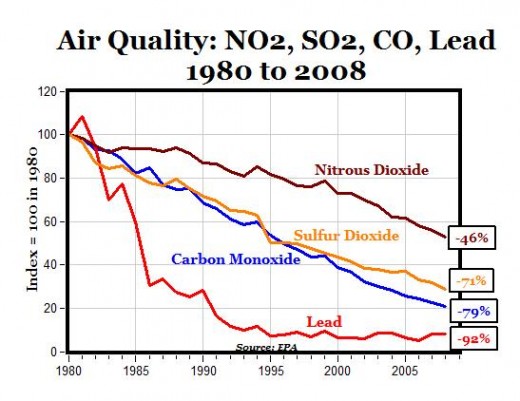
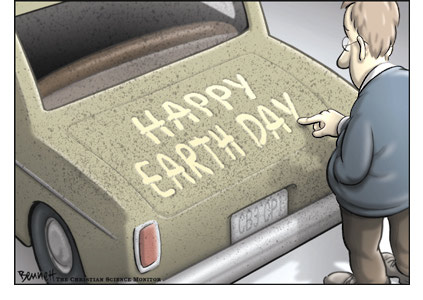
The Effect of Forty Years of Conservation
When I moved to Southern California in the seventies I fell in love with the place, but not with the pollution.
The Sky
Many days you could see a distinctive brown band in the air just above down-town Los Angeles. Imagine, if you will, the downtown area is not that big compared to other mega-urban areas, yet there were many days of the week, particularly work days, when one could look at the horizon and see just where the smog bank stopped and the clearer air began.
It was hard to breathe and there were weather advisories warning the elderly and very young to stay indoors because the air was not healthy to breathe.
Marine Layer
Because Los Angeles is a mere ten miles from the ocean a marine layer forming over the ocean and moving inland would make the smog just that much worse. The air would become saturated with moisture and hug the ground. This, in turn, caused the smog to concentrate at ground level.
I have clear memories of days like that when the fine drops of water in the air would literally burn my eyes. I also had difficulty breathing and the smell was akin to sniffing the exit end of an exhaust pipe. This was in the seventies.
Today I can look at the sky-line and though it can be obscured by pollution it's nothing like it used to be. The sky is much clearer and most days I can see to downtown and well beyond. The Clean Air Act and the California Air Quality Management District are largely responsible for these changes.
The air no longer stings my eyes and breathing is much easier. When my car passes smog inspection it's something to feel good about. I no longer gag on the air in traffic. I recycle as much as possible even going so far as to compost my organic waste into my garden. And the garden is occupied by drought resistant low water usage plants.
I doubt my attitude would be anything like this if Gaylord Nelson and people like him had not made saving the environment an issue.
Environmental Pioneers
- John Muir - Wikipedia, the free encyclopedia
- Ralph Waldo Emerson - Wikipedia, the free encyclopedia
- John James Audubon - Wikipedia, the free encyclopedia
- Henry David Thoreau - Wikipedia, the free encyclopedia
- George Perkins Marsh - Wikipedia, the free encyclopedia
- Theodore Roosevelt - Wikipedia, the free encyclopedia
Environmental Advocates
- Ansel Adams - Wikipedia, the free encyclopedia
- Aldo Leopold - Wikipedia, the free encyclopedia
- Jacques Cousteau - Wikipedia, the free encyclopedia
- Aziz Ab\'Saber - Wikipedia, the free encyclopedia
- Lester R. Brown - Wikipedia, the free encyclopedia
- Rachel Carson - Wikipedia, the free encyclopedia
- Chico Mendes - Wikipedia, the free encyclopedia
Political Environmentalists
- Gaylord Nelson - Wikipedia, the free encyclopedia
- Denis Hayes - Wikipedia, the free encyclopedia
- Jimmy Carter - Wikipedia, the free encyclopedia
- Al Gore - Wikipedia, the free encyclopedia
- David Brower - Wikipedia, the free encyclopedia
- Rusty Schweickart - Wikipedia, the free encyclopedia
- Steve Irwin - Wikipedia, the free encyclopedia
- David Suzuki - Wikipedia, the free encyclopedia
- Paul Watson - Wikipedia, the free encyclopedia
- Jane Goodall - Wikipedia, the free encyclopedia
- Maria Cantwell - Wikipedia, the free encyclopedia
Coda
Though some critics claim that the Earth Day celebration is now paying homage to itself and no longer serves any other function than allowing companies to "green-wash" problems, it has done a lot of good.
Most of the issues that we faced in the seventies have been addressed if not completely solved. Even if some of those issues still exist most, with one glaring exception, have improved drastically. And the movement, rather than costing everyone too much to implement, has been profitable and made our lives much healthier besides.
Remaining Issues
The Ozone Layer: The one issue that continues to be a major problem is the ozone layer. But when scientists predicted the problem it was known, even then, that it would take decades if not centuries to rectify.
Recycling: This continues to be a problem. Entirely too many cast off products end up in the landfill or worse, cannot be recycled effectively. Electronics in particular, with their ever shrinking sizes and the decades old methods of manufacture are simply too difficult to recycle. This includes the new generation of cellphones, smartphones, laptops, and tablet computers. Cars are another contributor to the problem. Made with a wealth of dissimilar materials automobiles are difficult to recycle with many of the components nearly impossible to separate from the overall structure.
More needs to be done in this area to make our manufactured goods recyclable from the very beginning. This is not impossible, but may be nothing more than inconvenient.
Adaptive Reuse: Though this is a much more popular option than it was even ten years ago too many manufactured objects that could be re-purposed for an extended useful life end up being thrown out instead of reused.
Conspicuous Consumption: Individuals and restaurants continue to purchase more basic food ingredients than can be used; this in itself is not bad, but rather than donate unused food to food-banks or compost it at excellent fertilizer it gets thrown in the trash.
Renewable Power: The most popular solar cell design is over thirty years old and only works best at one wave-length of light. Wind power is fickle and wave power has been passed by. Perhaps worst of all, storing "free power" continues to be a sticky problem that is being worked upon, but not widely implemented. Scientists are already working hard on solutions to these inefficient power gathering and storing technologies, but none of the major players seem willing to embrace them. Change is hard and can be costly.
Ideal Conservation
The ideal way to tred lightly is to insure that every item passing through human hands be designed from the very beginning to be returned to its natural state. Ideally, land use should be developed, from the very beginning, to be returned to its wild, pre-development state.
We, as a nation, had the best recycling program in the entire world at one time. Driven by necessity and backed by the Federal Government, the recycling programs of World War Two virtually guaranteed that every cast off item made its way to a foundry, paper-mill, or victory garden.
Disclaimer
The author was not compensated in any way, either monetarily, with discounts, or freebies by any of the companies mentioned.
Though the author does make a small profit for the word count of this article none of that comes directly from the manufacturers mentioned. The author also stands to make a small profit from advertising attached to this article.
The author has no control over either the advertising or the contents of those ads.

